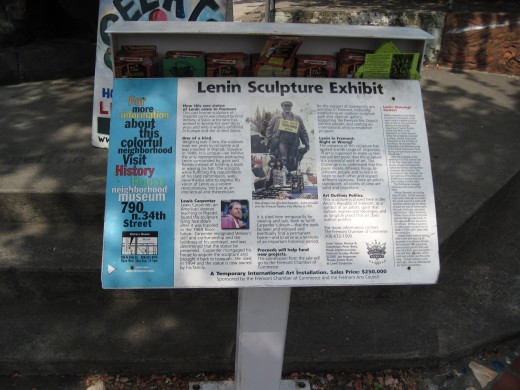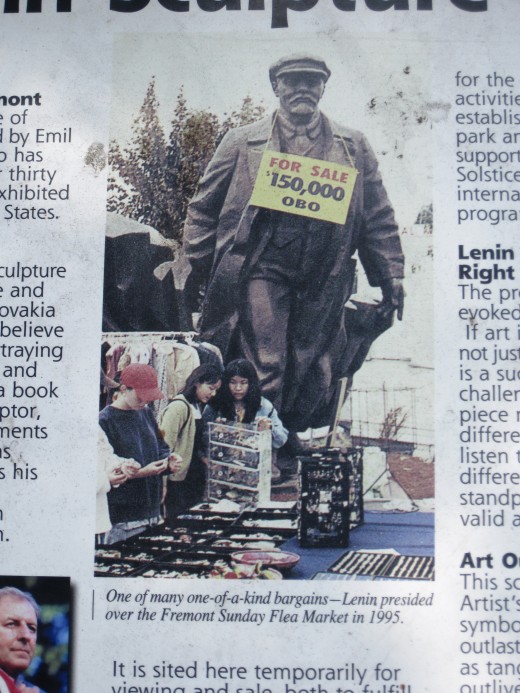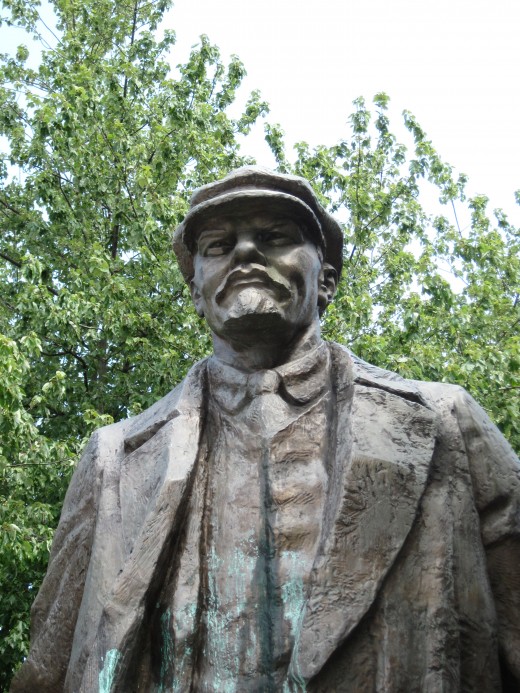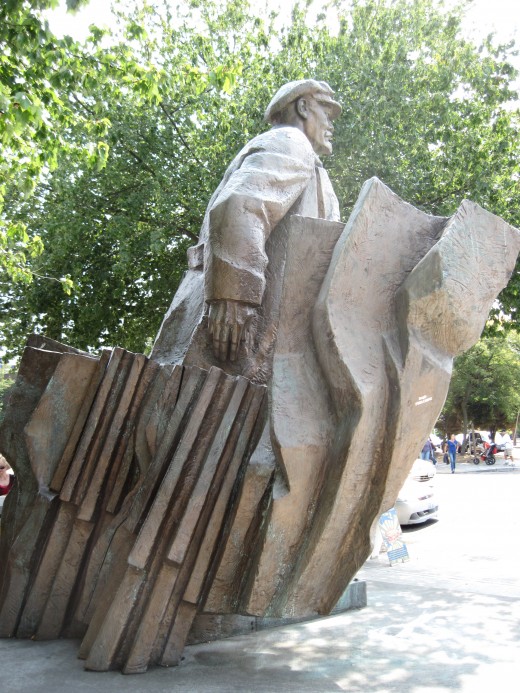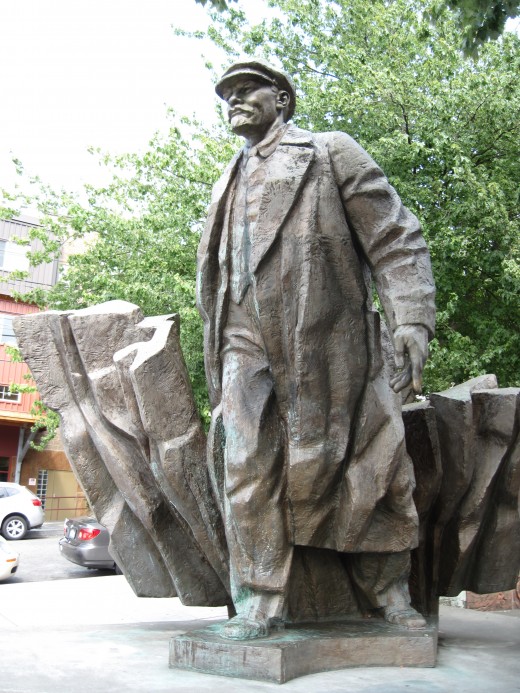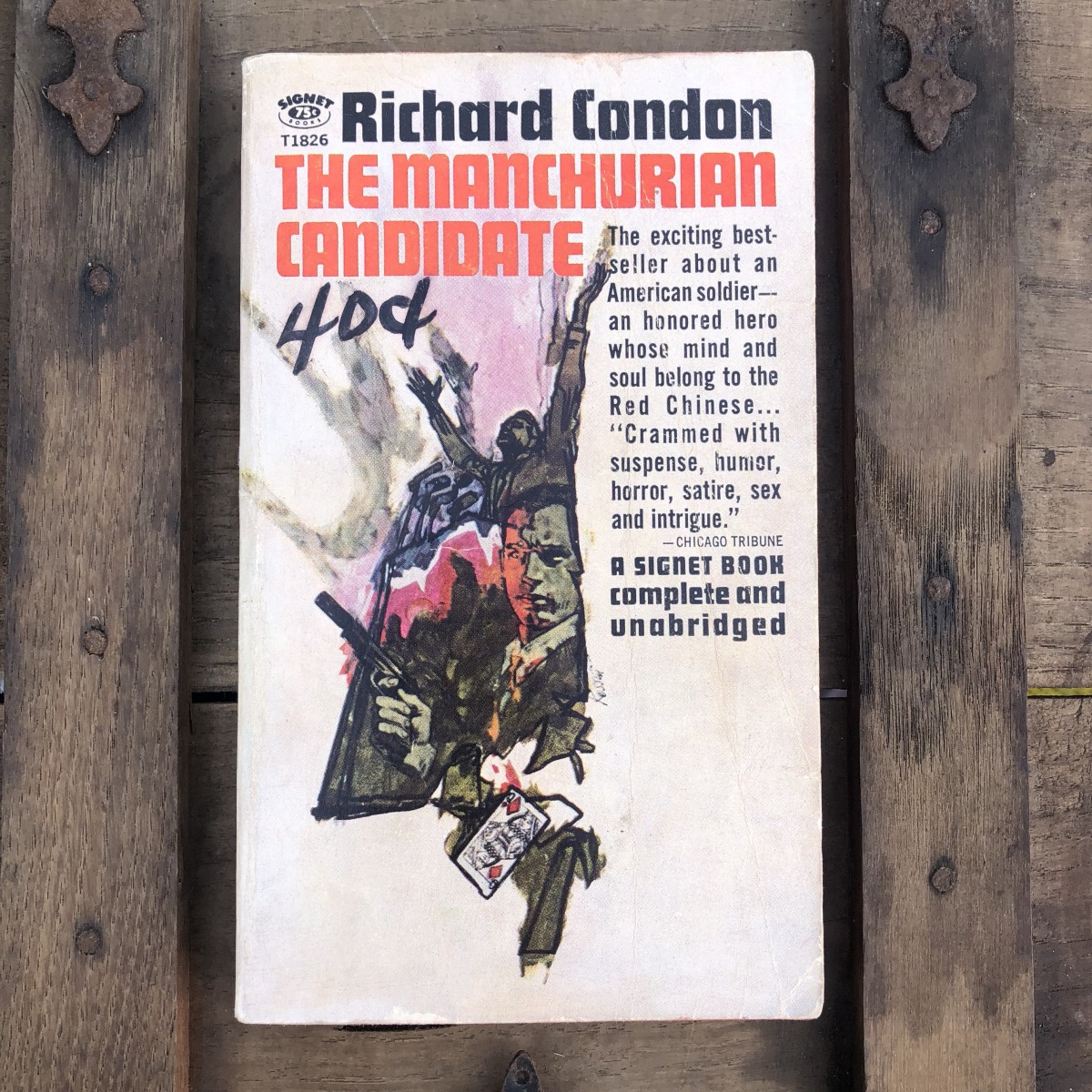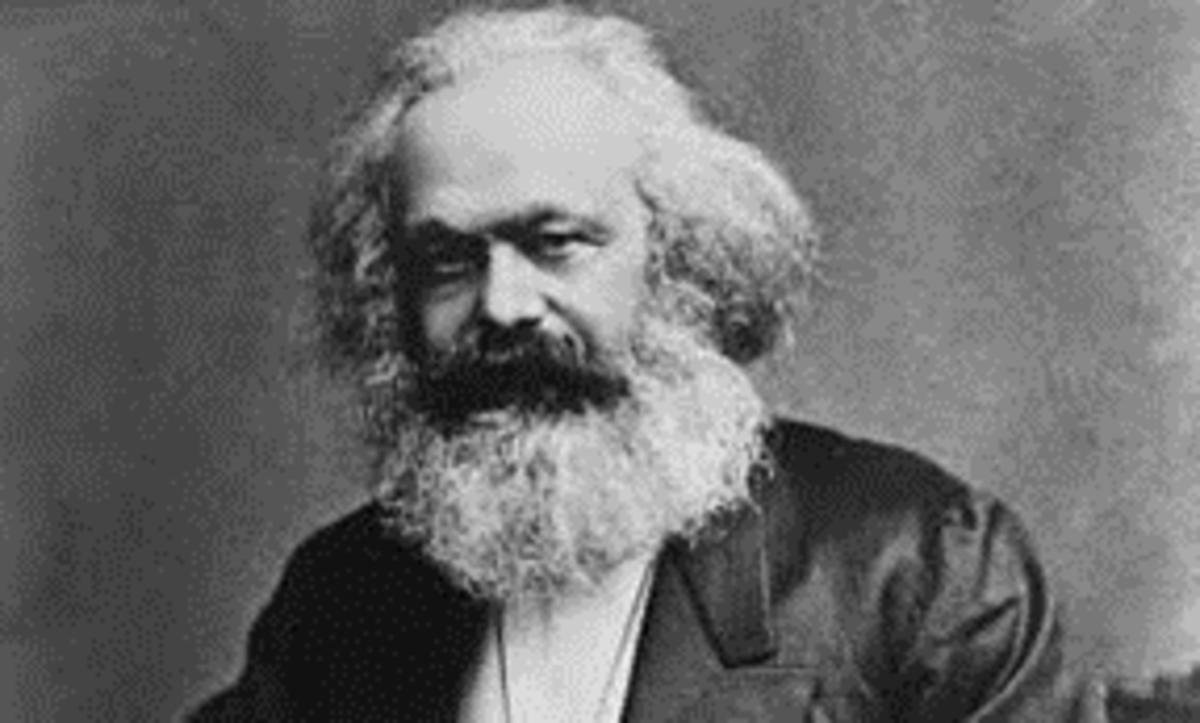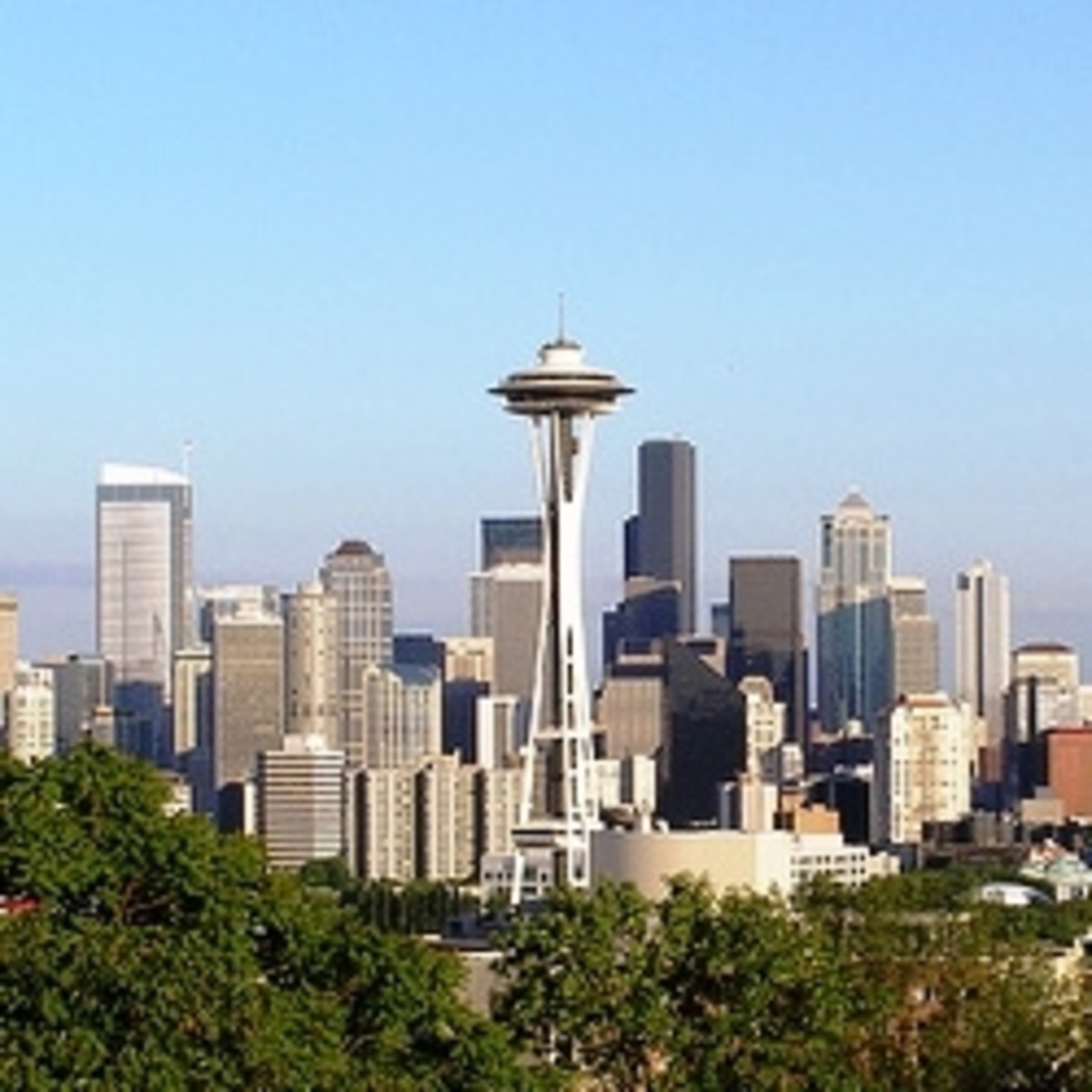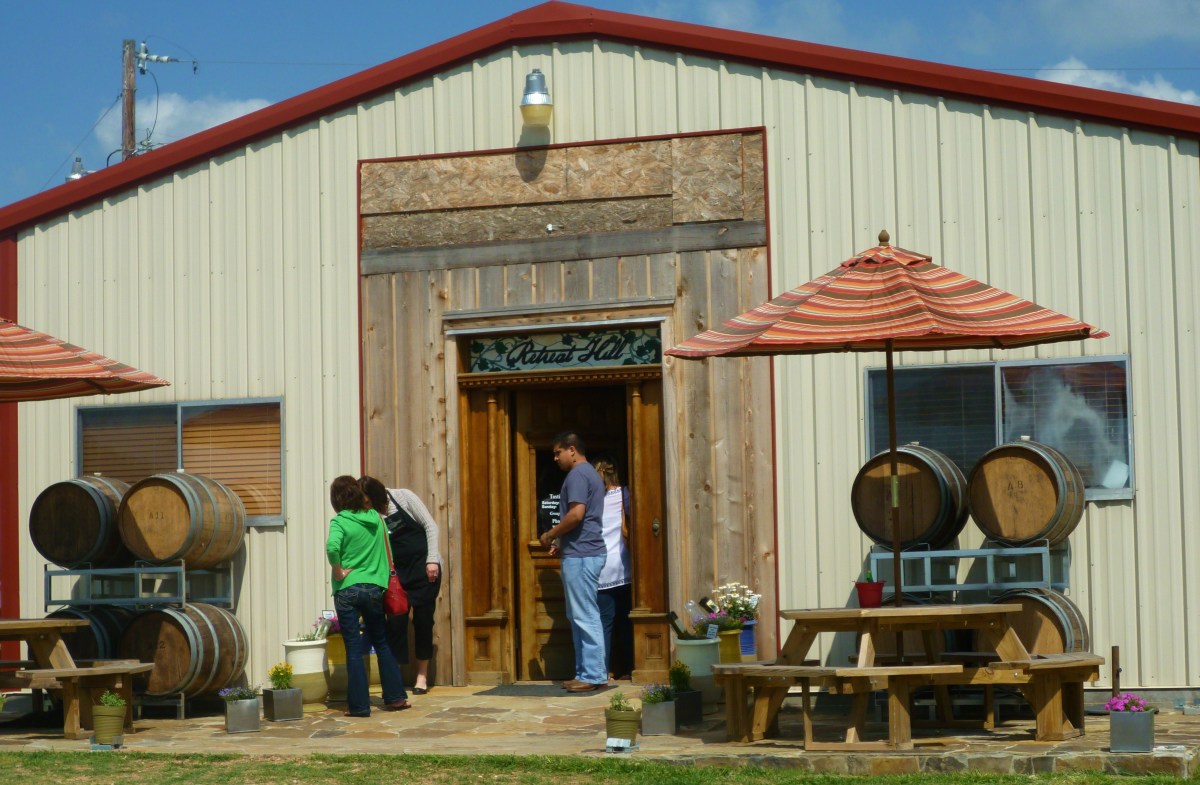- HubPages»
- Travel and Places»
- Visiting North America»
- United States»
- Washington
A Statue of Communist Dictator Vladimir Lenin Saved From Scrap Heap by an American Capitalist
Following up on a Piece of Decade Old Trivia
Over a decade or so ago, not long after the fall of communism in the former Soviet Union, I heard a comment on the radio while driving home from work, about a statute of the former Soviet dictator, Vladimir Lenin, being rescued from a scrap heap following the downfall of communism, and moved to Seattle, Washington. While I could see no reason why anyone would want such a thing there is no accounting for people's tastes - witness the niche market in relics from the era of Hitler and his Nazis.
I had, of course, seen many statutes of this dictator while visiting the former Soviet Union with a Russian studies class I had enrolled in while in college. On that trip we had even made the obligatory visit to the dictator's tomb in Red Square in Moscow where we viewed his remains.
Knowledge of this statute become one more piece of trivia that got filed in the back of my mind where it rested with other similar trivia which had no current use but kept in the recesses of my mind just in case.
Seattle's Woodland Park Zoo
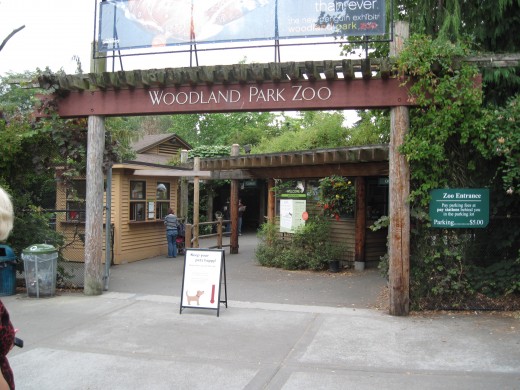

A Little Detour While Traveling from the Zoo to Downtown
About a year ago our daughter graduated from college and took a job in the state of Washington. This summer we decided it was time to visit her in Redmond just outside of Seattle.
Having never been to Seattle we, of course, took the opportunity to see the sights and, to save money, purchased a City Pass which, for a flat fee, gave us access to about five of the city's top sites for the cost of two or three of them.
The last site we visited on the pass was Seattle's Woodland Park Zoo north of downtown. Since this was not to be an all day visit, my son Victor (Sith Penguin on HubPages) suggested we also visit Pioneer Square in Downtown Seattle and take the Underground Tour to see the remains of the old buildings that existed before the Great Fire of 1889 destroyed the original city.
A quick Google search gave me the location of the Lenin statue and a look at Google Maps showed it to be a couple of blocks west of one of the direct routes from the Zoo to downtown Seattle.
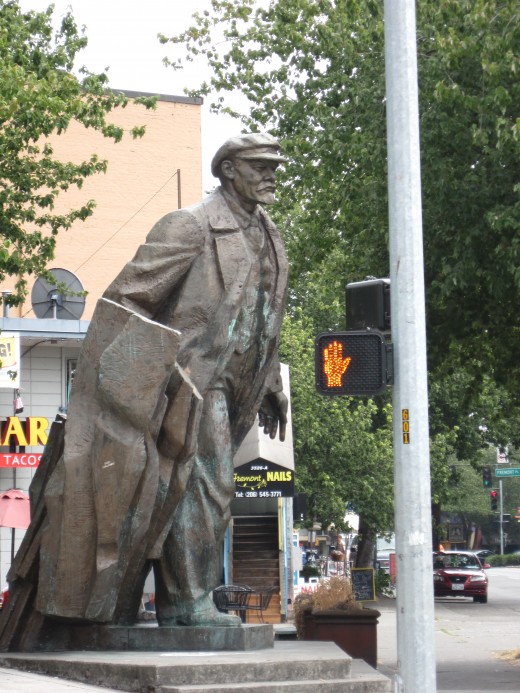
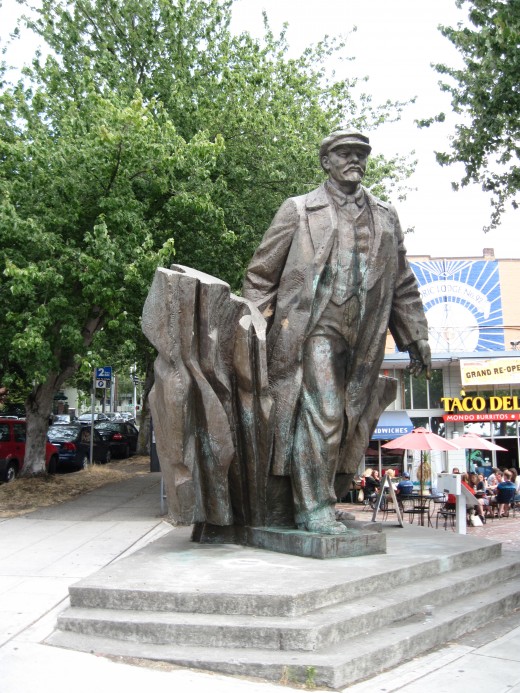
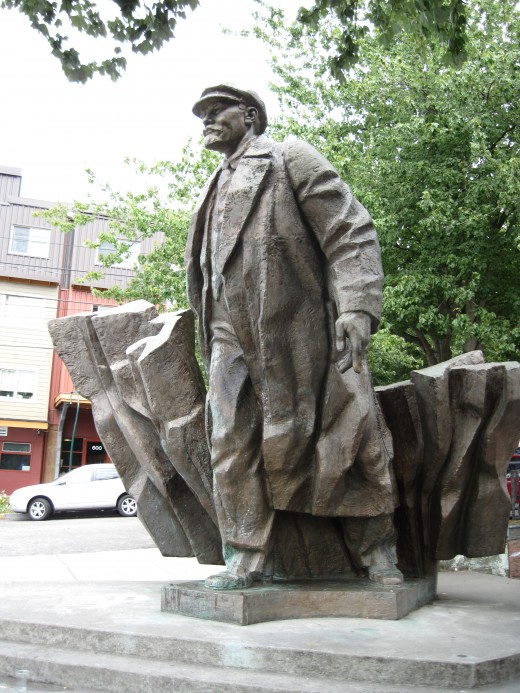
So, how did a statute of Vladimir Lenin end up in Seattle?
The story begins in the city of Poprad located in present day Slovakia (Slovak Republic) where sometime in the late 1970s or early 1980s Soviet and Czech authorities decided that Poprad needed a statue (or possibly another statue) of Lenin. The Slavic sculptor Emil Venkov was given the commission to make the bronze sculpture and, ten years later, in 1988, the statue was unveiled in Poprad.
The following year, 1989, the Velvet Revolution ended communism in Czechoslovakia (NOTE: Slovakia separated from Czechoslovakia and became an independent republic on January 1, 1993). With the fall of communism, there was no longer a need to dot the landscape with statues of Lenin and tons of them ended up in scrap yards waiting to be converted into something more useful. Thus, after a mere year on display, Venkov's statue ended up in a scrap yard.
According to the story, it was in a scrap yard in Poprad that, Lewis Carpenter, an American Vietnam Veteran and businessman who was teaching English in Poprad at the time encountered the statue waiting to be melted down. Intrigued with what he saw as the artistic merit in the statue, Carpenter set about negotiating to purchase the statue. Following a couple of years worth of haggling Carpenter finally got the local authorities to sell him the statue for a reported $13,000. He then spent an additional $41,000 to have it shipped to his home in the Seattle suburb of Issaquah.
Public opinion in Washington was not happy with the new sculpture in Carpenter's yard. However, Carpenter didn't have to put up with the opposition to his purchase for long as he died in a car accident in February of 1994 leaving his family to sell his home, which he supposedly mortgaged to pay for the statue and its shipment to the U.S., and dispose of the seven ton statue in the yard.
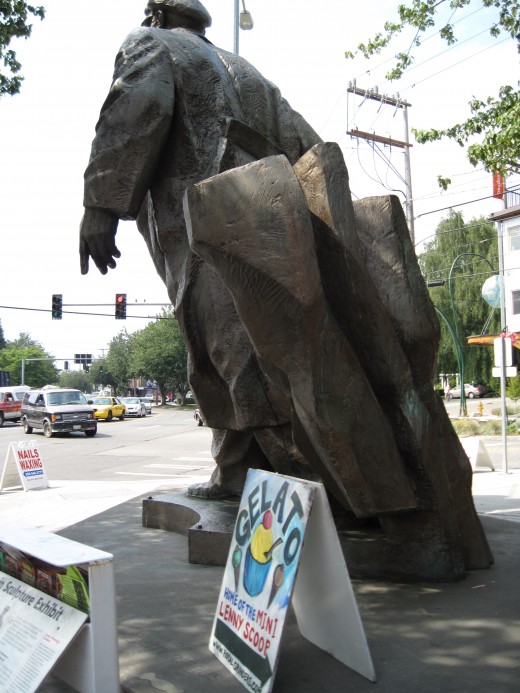
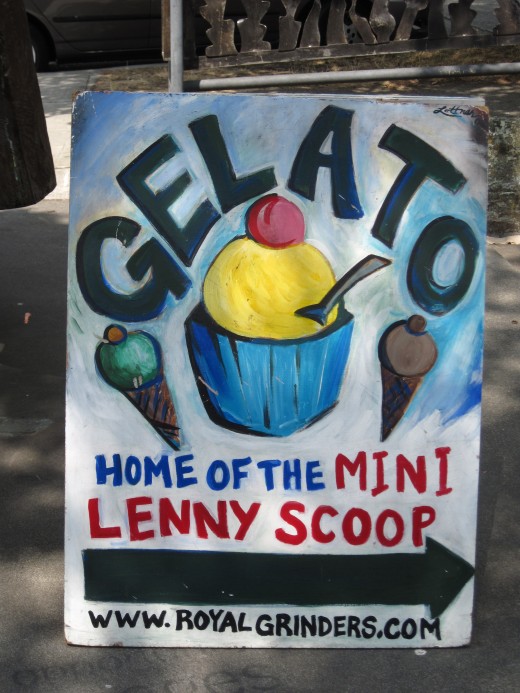
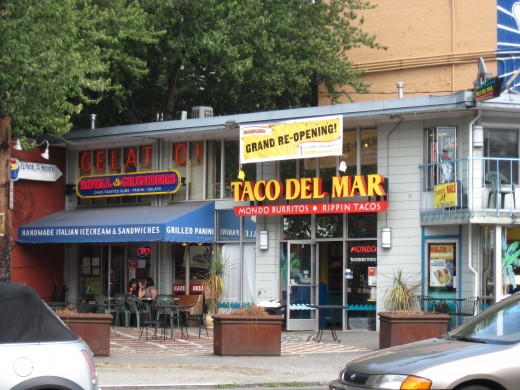
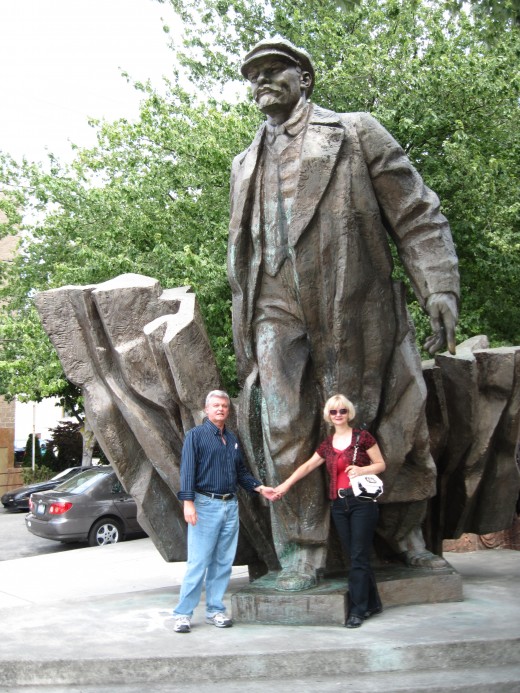
A Temporary Home in the Artist's Republic of Fremont
While Lewis Carpenter may have planned to keep the statue in his backyard, his heirs apparently didn't share his appreciation for this type of art and didn't feel that it would be appreciated by potential buyers of the home either.
However, Carpenter's heirs apparently also felt that it had potential artistic or historic value as, instead of selling it for scrap, they decided to offer it for sale, asking $150,000 initially and, when we visited it the price had been increased to a quarter million dollars. However, they either did not want it in their own yards or, more likely, felt that their chances of selling it would be better if it was displayed in a more public place. As a result they made a deal with the Chamber of Commerce of the Fremont neighborhood in Seattle to display it, at the corner of 34th St. and Fremont Ave. in front of the Royal Grinders Gelato and Taco Del Mar restaurants, in return for a commission on its sale.
Fremont was originally settled as a separate city but it is now a gentrified artists colony within Seattle proper. Fremont has the look and feel of similar gentrified areas in other cities whose crumbling infrastructure and low rents in the 1960s first attracted struggling artists and hippies who gave it a New Age feel which then attracted the upscale yuppies who shared their political and cultural tastes. Visiting one of these communities is like stepping back in time to the 1960s.
Carpenter claimed to have been attracted to the statue by its artistic quality. The sign next to the statue states that Carpenter admired Venkov's skill and craftsmanship as well as the boldness of Venkov's portrayal of Lenin. Other parts of the sign describe the sculpture and the justification for displaying it in Seattle by saying:
It is unique - we believe the only representation portraying Lenin surrounded by guns and flames instead of holding a book or waving his hat. The sculptor, while fulfilling the requirements of his state commission, was nevertheless able to express his vision of Lenin as a violent revolutionary, not just as an intellectual and theoretician.
If art is supposed to make us feel, not just feel good, then this sculpture is a successful work of art.
This sculpture is placed here in the Artist's Republic of Fremont, as a symbol of an artistic spirit that outlasts regimes and ideologies, and as tangible proof that art does outlive politics.
Carpenter and his supporters in Fremont are correct in that this statue is unlike the other statues of Lenin formally found in the Soviet empire and its satellites. Venkov's Lenin has the aggressive stance of a leader moving forward and the abstract elements behind him could very well represent guns and flames. Despite the fact that Emil Venkov appears to be a sculptor of some renown in Western as well as the former communist Eastern Europe and that he assisted Lewis Carpenter in the dismantling of the statue in Poprad and its re-assembly in Seattle I have found very little information about him and his beliefs.
The Lenin in Venkov's statue differs from the Lenin portrayed in most other statues mainly because of the guns and flames that people see in the background. While the background more than likely is intended to represent guns and/or flames, the background portion of the statue, unlike the Lenin portion, is abstract and open to interpretation by the viewer.
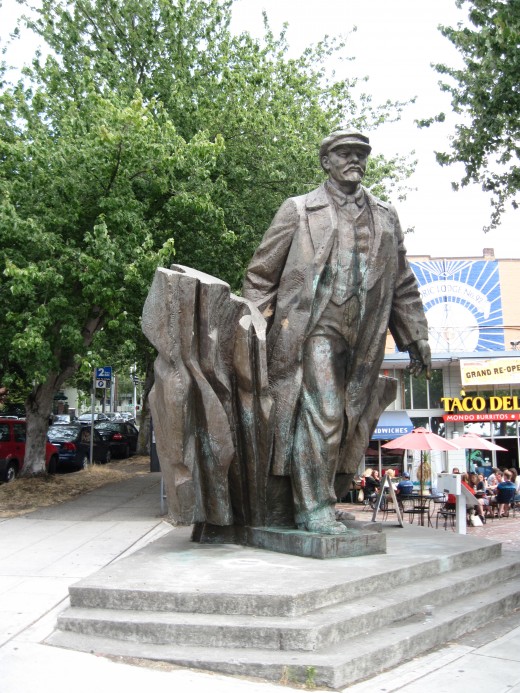
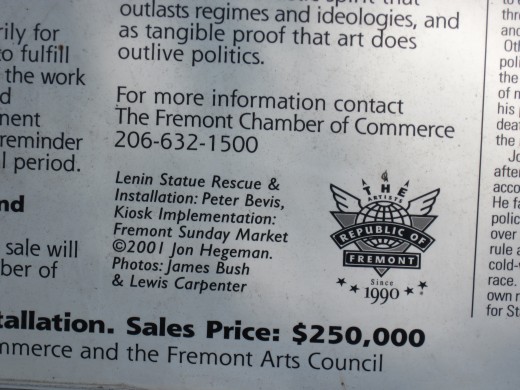
An Alternative Interpretation of the Statue's Symbolism
This is speculation on my part, but I can't help wondering if Venkov intended the background to represent guns and flames and that there could have been a double meaning attached to them. Living and having to make ones way in a society in which the government attempted to dictate every aspect of people's lives, the guns and flames could have been included to give the ruling nomenklatura a Lenin who was a powerful leader striving boldly forward advancing Marxism. However, he could have made the statue in this way to portray Lenin as a ruthless dictator advancing his revolution while leaving death and destruction in his wake.
Vladimir Lenin was more of a theoretician and politician than militant revolutionary who personally engaged in violence and killing. He left it to others like Leon Trotsky, Josef Stalin and others to handle the shooting part of the revolution and Civil War that followed his takeover.
However, ignoring deaths resulting from the 1918 -1922 Russian Civil War in which Trotsky's Red Army fought an uprising by White Russians (White Russians here refer to the Russian nobility and other anti-communist Russians who opposed the forced takeover of Russia by Lenin and his Bolsheviks and not the drink by that name which is a mixture of Kahlua or other coffee liqueur and cream or vodka, coffee liqueur and cream) it has been estimated that between 100,000 and a half a million people were murdered (these numbers included Mensheviks and other social democrats as well as members of the nobility and middle class bourgeois) by the Cheka (predecessors of the KGB) during the Red Terror initiated by Lenin along with an additional 30 million people who perished in the famine that resulted from Lenin's forced imposition of his disastrous economic policies.
The old saying, the pen is mightier than the sword is certainly true in the case of Vladimir Lenin in that he murdered more people with his pen than Trotsky's Red Army killed on the battlefield with their guns and swords during the bloody 1918 - 1922 Russian Civil War.
Then there were the 900,000 to two million emigres who fled abroad to escape the terror and bloodshed unleashed by Lenin and his Bolsheviks. Often referred to as White Russians (members of the nobility and bourgeois) this group also included social democrats and other socialists who, despite sharing much the same political philosophy as Lenin and his followers they were still targets of the terror Lenin unleashed upon Russia.
Included in this group were relatives of the murdered royal family, middle class intellectuals like the Ayn Rand and politicians like the social democrat Alexander Kerensky who was the second Prime Minister in the Provisional Government that replaced the Czarist monarchy in the March 1917 Russian Revolution and which was overthrown in the October 1917 uprising by Lenin and his Bolsheviks. Kerensky spent the remainder of his life in exile in the United States where he died in New York in 1970.
While Kerensky did not live to see the end of communism in Russia, when the Russian Parliament met for the first time after the end of communism the new government declared itself to be the legitimate successor to the Provisional Government led by Kerensky thereby treating Lenin's takeover as an illegal interlude in Russia's political life.
Communist Statue Saved by a Capitalist
There is a certain irony to the Lenin statue in Seattle in that it was saved and preserved by an American capitalist, a member of a group Lenin and his followers had vowed to exterminate.
Lenin is famous for dismissing capitalists as greedy by boosting that The Capitalists will sell us the rope with which we will hang them. But, in the end it was a capitalist who saved Lenin's statue and, if Lewis Carpenter's family ever succeeds in selling the statue for the $250,000 they are asking for it the profit on Lewis Carpenter's $54,000 investment would be phenomenal.
- Anarchy Reconsidered
Mention the word anarchy and most people visualize chaos and mayhem. This image of chaos certainly fits society's experience with anarchy in the past century or so. After all, it was an anarchist, Leon... - Royal Grinders ::: Fremont\'s Tasty Subs
Royal Grinders Subs - located behind the Lenin statue in Fremont. - Statue of Lenin (Seattle) - Wikipedia, the free encyclopedia
- Fremont: Lenin Statue
- Text of a 1993 Discussion by Tomáš J. Fülöpp with Lew Carpenter
- Lenin of Poprad: The Story
- Saving a Lot of Bucks by Keeping My Mouth Shut
In the summer of 2002 I made a two week trip to Russia to visit my then fiancée, Bella. Bella lived in Ryazan, an industrial city that is home to about a half a million people. Since it has little to... - Lenin's Statue: Adding Insult to Injury
A Russian émigrés view, published in Frontpagemag.com on July 20, 2000, of Lenin Statue in Seattle.
